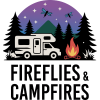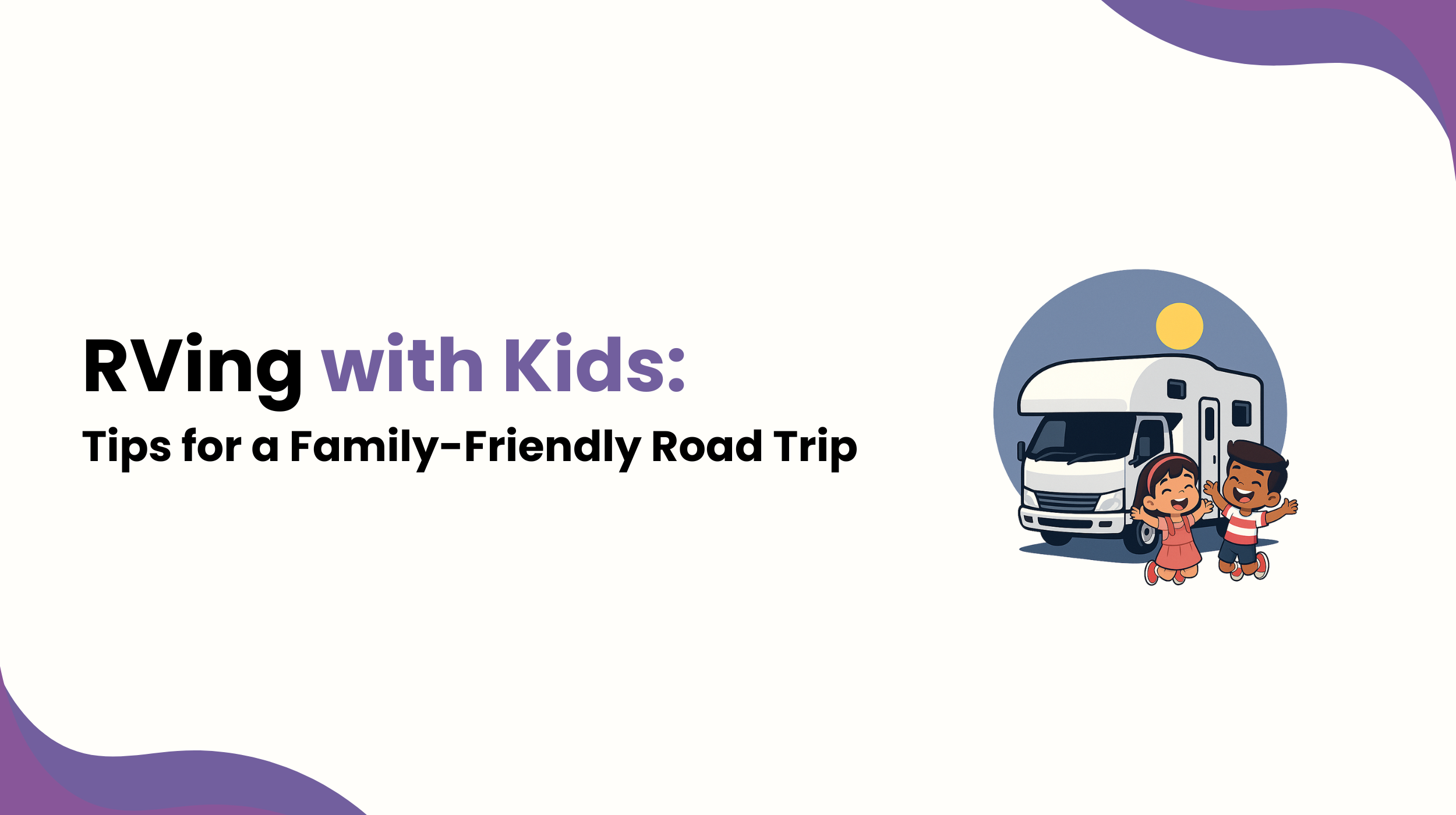Transform the daunting task of planning an RV trip with kids into your family’s most cherished adventure. This comprehensive guide breaks down every step, ensuring happier memories and fewer travel-day meltdowns.
Why an RV Trip is the Ultimate Family Adventure
There’s something magical about hitting the open road with your family, with everything you need packed into a home on wheels. Imagine exploring national parks, beach towns, or mountain escapes while your kids giggle in the back, meals are shared at a picnic table, and each night ends in your cozy, familiar RV beds. RV travel offers a blend of structure and freedom, providing both security and spontaneity, something that’s rare in family vacations.
Of course, many parents worry about the mess, the boredom, the chaos. But with a bit of preparation, those concerns are easily overcome. RV trips teach kids to adapt, appreciate nature, and embrace togetherness. Plus, having a consistent home base reduces the stress of frequent hotel check-ins and unpredictable restaurant meals. The payoff? Unforgettable moments, tighter bonds, and stories your kids will talk about for years.
Phase 1: Pre-Trip Planning & Preparation
Before any wheels roll, it’s crucial to lay the groundwork. The planning phase is where you set yourself up for smooth travels and being able to relax as parents.
Choosing the Right RV for Your Family
Not all RVs are created equal, especially when kids are involved. Class C motorhomes are often the go-to for families because of their built-in beds and compact driveability. Travel trailers and fifth wheels offer more interior space and are better suited for longer stays or families with multiple kids.
Look for family-friendly features like bunkhouses with privacy doors (perfect for naps or early bedtimes), a residential-sized fridge for meal prep ease, and ample exterior storage for bikes, toys, and gear. If you’re new to RVing, renting through platforms like Cruise America or Outdoorsy is a smart way to test the waters before committing to ownership.
Involving Kids in the Planning Process
One of the easiest ways to get your kids on board and cooperative is to involve them early. Give them a few pre-approved destination options to choose from. Let older kids research local activities or must-see spots. Invite them to help plan meals or pack their own entertainment kits.
The more included they feel, the more ownership they’ll take. This also helps turn the trip into a shared family project, not just something the parents are dragging everyone into.
Mapping Your Route & Itinerary
Kids do better with predictability, so map out your route with realistic travel expectations. Limit drive time to three or four hours for toddlers and young kids. Older kids can usually handle up to eight, especially with breaks.
Many RVers follow the “2-2-2 Rule”: travel no more than 200 miles a day, arrive by 2 p.m., and stay two nights. The “3-3-3 Rule” (300 miles, 3 p.m., 3 nights) is a slightly faster pace but still manageable. These guidelines keep the journey enjoyable, not exhausting.
Make sure to book your campsites well in advance, particularly if you’re traveling during summer or holidays. Sites in national parks or at popular KOAs can fill up months ahead.
Phase 2: Packing Smart for a Family RV Trip
With limited space and kids in tow, smart packing is everything. Think comfort, convenience, and containment.
Clothing, Comfort, and Sleep Essentials
Pack layers instead of bulky items. The weather can change quickly, especially if you’re moving between regions. Each child should have their own space-saving packing cube to stay organized.
Don’t forget familiar comforts: favorite blankets, stuffed animals, bedtime storybooks, or a white noise machine can make a big difference in unfamiliar surroundings. Bring extra sheets and blankets, campgrounds can get chilly at night, especially in spring or fall.
The Ultimate On-the-Go Entertainment Kit
Screen time has its place, but a good mix of digital and analog entertainment goes a long way. Pre-load tablets with movies, audiobooks, and educational apps for drive time. Offline-friendly favorites include Spotify playlists or Audible kids’ stories.
At the campsite, keep boredom at bay with board games, card games, Legos, nature journals, coloring supplies, or outdoor gear like frisbees and bug-catching kits. Classic car games like Road Trip Bingo or I Spy help pass the miles with younger kids.
Stocking the Galley: Meal Planning & Snacks
RV kitchens are small, so plan meals that are simple and versatile. Tacos, pasta, sandwiches, and one-pan skillet meals are always crowd-pleasers. Pre-chop veggies, marinate meats, and portion out ingredients at home to cut down on campsite prep.
Snacks are your secret weapon against meltdowns. Pack healthy, easy-to-grab options like fruit, granola bars, trail mix, and string cheese. Use a dedicated snack bin or cooler within arm’s reach for quick access during drive time.
Phase 3: Life on the Road
Once you’re in motion, daily rhythms and road safety become your new focus.
Driving Safely with Kids in an RV
Safety is non-negotiable. According to Progressive, all passengers must be properly restrained, meaning seat belts or age-appropriate car seats. RVs are not like school buses, and walking around while the vehicle is moving is not safe.
This means planning for frequent stops, every two to three hours, for bathroom breaks, leg stretching, or snack refills. Build in buffer time so you’re not rushed and can stop spontaneously at roadside attractions or scenic overlooks.
Establishing a Flexible Routine
Kids thrive with routine, even in an ever-changing environment. Stick to regular mealtimes and bedtimes when possible. For toddlers, try to drive during nap time. After arrival, give kids time to settle in and get familiar with each new campground.
Still, leave room for spontaneity. That quirky roadside ice cream stand or last-minute waterfall hike may end up being the highlight of the trip.
Managing the Small Space & Staying Organized
RV living means shared space, so organization is key. Create designated spots for shoes, clothes, snacks, and toys. Use collapsible bins, over-door organizers, and under-bunk storage to keep clutter in check.
A nightly “10-minute tidy” helps reset the space and keeps you from feeling overwhelmed. Assign small chores to kids, like sweeping the floor or putting away toys, to get them involved.
Phase 4: Thriving at the Campsite
Campsite life is where the memories are made, campfires, hikes, marshmallows, and more. Make it comfortable and safe.
Childproofing the RV and Campsite
Inside your RV, secure cleaning supplies and medications with cabinet latches. Turn off propane when not in use, and install safety rails on top bunks if needed.
Outside, lay down a mat to create a defined play area. Be aware of nearby hazards, like rivers, cliffs, or fire pits, and establish clear boundaries. Teach younger kids campsite rules early: don’t wander off, watch for vehicles, and always ask before exploring.
Handling Downtime and Rainy Days
When the weather turns, pivot to indoor fun. Keep a few rainy-day activities tucked away: puzzles, coloring books, or a stack of favorite movies. Make it a cozy bonding opportunity with hot chocolate and a movie night.
When the sun’s out, take advantage of the outdoors. Bike rides, treasure hunts, campfire stories, or classic games like hide-and-seek keep kids engaged and active.
Frequently Asked Questions
Can you travel with kids in an RV?
Yes, RVing with kids can be a fantastic way to explore while enjoying the comforts of home. With proper safety precautions and thoughtful planning, it can be an enriching experience for all ages.
Can kids walk around in an RV while driving?
No. All passengers must be seated and buckled in when the vehicle is moving. This is critical for safety and required by law in most states.
Can kids sleep in an RV while driving?
Sleeping in a moving RV is only safe if the child is secured in a car seat or seatbelt in a designated passenger seat. Beds and couches are not safe for sleeping while in motion.
How to keep kids safe in an RV?
Always secure them in seat belts while driving, childproof the interior, set campsite rules, and supervise outdoor play. Turn off propane when not in use and store hazardous items securely.
What are the best RV layouts for families?
Look for bunkhouse models, spacious slide-outs, and separate sleeping zones. Ample storage and a larger fridge also help accommodate family life.
How do I plan a family RV trip?
Start with choosing the right RV and booking kid-friendly campgrounds. Involve your kids in the process, plan short travel days, pack smart, and build in downtime.
Your Adventure Awaits
The best family vacations are the ones where everyone is smiling in the rearview mirror because the trip was fun, not frustrating. RVing with kids might initially sound overwhelming, but with the right preparation, it becomes one of the most rewarding ways to travel.
Take time to plan, involve your kids, stay flexible, and focus on making memories over checking off miles. From s’mores under the stars to giggles at roadside diners, this could be the adventure your family talks about for decades.
So get your map, grab your snacks, buckle up the kids, and hit the road. Your next unforgettable journey starts now.

